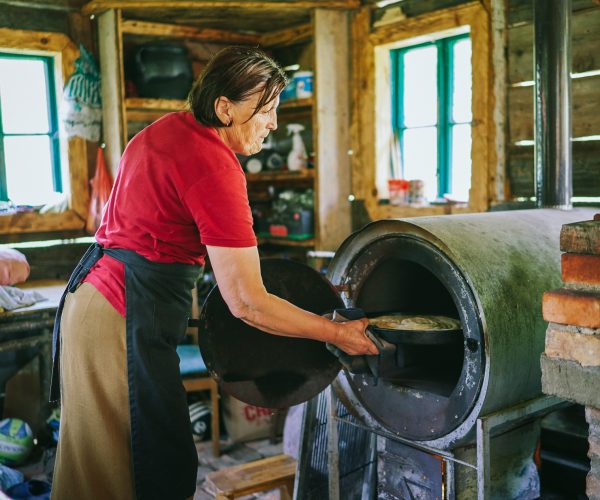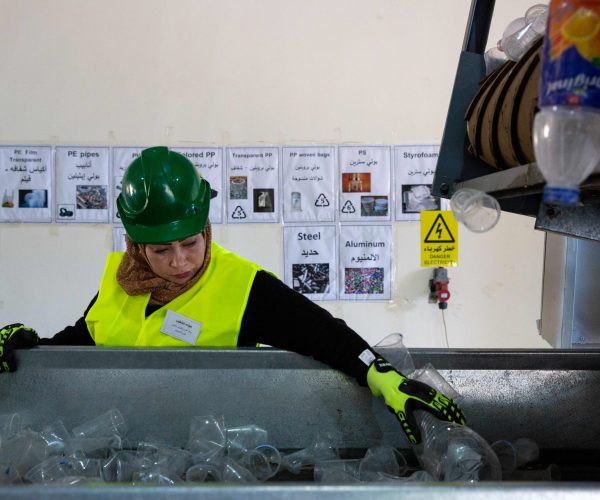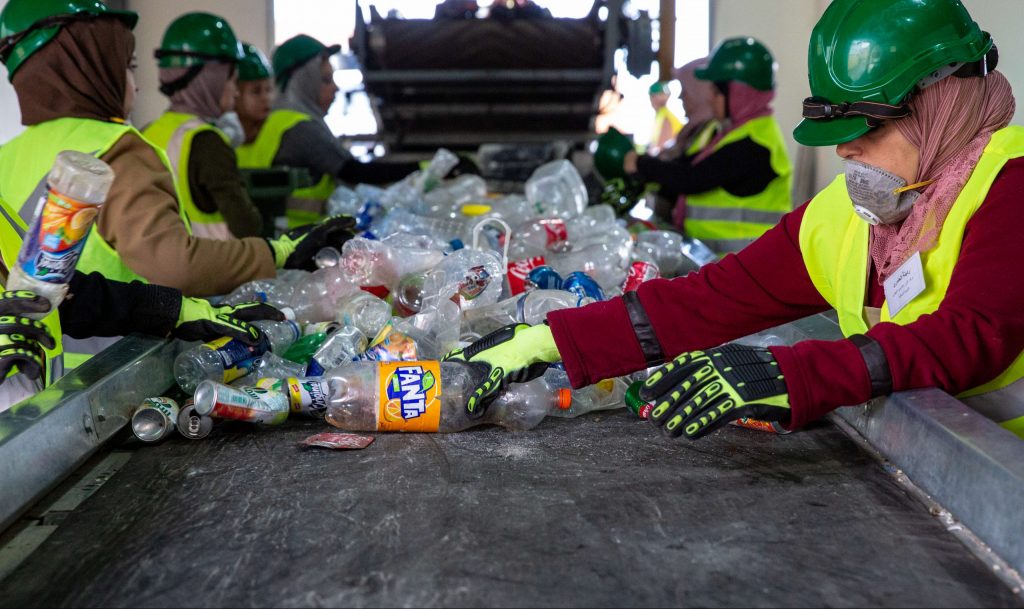Advancing gender equality in NDCs: progress and higher ambitions
Around the world the impacts of the climate crisis are accelerating. The impacts disproportionately burden the poorest and the most vulnerable, especially poor women.
While the impacts threaten development globally, on the other hand, massive economic and social gains can come from reducing emissions and building climate resilience. In fact, both mitigation and adaptation can accelerate progress across each and every one of the Sustainable Development Goals (SDGs). Some of the most important benefits are towards gender equality and women’s empowerment and leadership.
The question is, how can countries best engineer the solutions?
Keeping a Promise
Under the Paris Agreement, all Parties to the United Nations Framework Convention on Climate Change must submit national climate action pledges, known as Nationally Determined Contributions or NDCs, every five years. These cut across mitigation and adaptation, involve multiple actors and sectors of the economy, and offer unique opportunities to integrate gender equality in climate action at scale.
Working with countries to raise the ambition of these pledges, including in advancing gender equality, is the purpose of UNDP’s Climate Promise, the world’s largest offer of support in this space.
As of 1 of April 2024, 110 of 120 Climate Promise-supported countries and territories submitted more robust NDCs. Promisingly, 106 integrated gender equality considerations, up from 53 in the initial round of NDCs.
This second generation of NDCs demonstrates both greater attention to issues of gender equality and higher aspirations for action, with strong potential to contribute to national goals and international policy frameworks, for example the enhanced Lima work programme on gender and its Gender Action Plan – helping ensure no-one is left behind in the push for a low-carbon, sustainable future.
While there is a clear shift in the right direction, much remains to be done.
Making plans that accelerate change
In the first generation of NDCs submitted in 2015, most countries faced challenges in integrating gender. One common and crucial gap was a lack of gender-disaggregated data, which limited understanding of how climate change impacts women and men and other groups differently. A second shortcoming was that environment ministries and national climate change units rarely engaged with gender institutions, and women’s and civil society organizations had little involvement in climate-related policymaking.
To address these issues and establish a stronger foundation for progress, UNDP developed a three-pronged approach, building on existing efforts towards a more systematic consideration of gender in countries’ NDCs. The approach, central to the Climate Promise, has focused on three areas: effective governance, inclusive planning, and integrated policy frameworks.
Encouragingly, the second generation of NDCs show progress in each of these areas.
Effective governance
UNDP supports strong coordination mechanisms linking climate and gender equality actors as well as the strengthening of institutional capacity. Key is making gender-climate connections in policies and decisions in both areas, and regular exchanges with non-state actors, particularly grassroots women’s groups.
There are positive signs of change. The strengthening of climate change governance including through improved coordination between and within Ministries of Environment and gender institutions, has led to greater recognition of women in decision-making and engagement of women’s groups in climate action.
An NDC that includes gender institutions as part of climate governance
Under South Sudan’s NDC, the Ministry of Gender, Child and Social Welfare is responsible for championing gender perspectives and social justice in climate action across sectors. The Ministry promotes women’s empowerment and targets, ensuring the most vulnerable are not left behind on the road to a more prosperous low-carbon future.

An NDC that recognizes the equal participation of women in climate action, including in decision-making
Guinea-Bissau’s NDC highlights the agency of women in adaptation projects. Women play an active role in the assessment of needs and prioritization of initiatives, and provisions are made for them to engage equally in decision-making and implementation.

An NDC that seeks to engage non-state actors
Montenegro´s NDC acknowledges the participation of women in finding and implementing climate change solutions. The NDC seeks to set up a multi-stakeholder coordination mechanism that includes the private sector, as well as women and other vulnerable groups to enhance adaptation efforts.

Honduras seeks concrete actions to enhance women´s leadership
Hondura´s NDC recognizes the role and leadership of women as fundamental agents of change. In this context, it seeks to strengthen the institutional capacities on gender and climate change as well as includes several measures targeted to women to increase access to new skills and technologies. In addition, it aims to identify and integrate gender indicators into the Monitoring and Reporting of the NDC to keep progress on track.

Inclusive planning
Inclusive planning is an ongoing project. While it requires consulting with a diversity of stakeholders and maximizing political buy-in, as well as careful analyses to identify capacity gaps and planning priorities, it also requires attention to keep progress on track and incorporating gender into decision-making on an ongoing basis. UNDP is supporting countries to do just this.
Inclusive consultations, in which stakeholders co-define gender and climate priorities, accelerate the agency of women and marginalized groups, enabling them to adapt and build their own resilience and contribute to reducing emissions. In turn, steering a just transition to economies that are both more sustainable and equitable.
An NDC that prioritizes women’s access to finance
Kenya’s NDC seeks to strengthen the access of women, youth, and other vulnerable groups to enterprise funds, climate finance, and credit lines.

An NDC that signals greater access to resources and skills for women agricultural workers
In Zimbabwe, women represent most of the agricultural workforce and are particularly vulnerable to climate change. One of Zimbabwe’s adaptation priorities, then, is to reduce inequalities along agricultural value chains. Key will be overcoming barriers to accessing information and resources, as well as supporting women in accessing collateral and finance, and reducing the burden of work.

An NDC that seeks to know the state of climate-related inequalities and progress
Cambodia’s NDC highlights the crucial importance of gender- and age-disaggregated data to measuring the success of gender targets, not only related to women’s participation in climate action and decision-making, but also women’s access to skills and technology.

An NDC that calls for gender responsive monitoring and evaluation
Sudan´s 2022 NDC calls for a strong and well-functioning gender responsive Monitoring and Evaluation system (M&E) for adaptation. The development of the M &E system has been identified as a high-priority need and will involve capacity building of state-level institutions on M&E, establishing the data collection and reporting systems, developing modalities to engage affected communities, as well as sharing of knowledge and experience.

An NDC that prioritizes gender responsive financing
Moldova´s NDC seeks to improve women´s access to finance including by increasing funding to women´s associations to implement adaptation measures as well as to integrate gender responsive budgeting into national climate financing. The country plans to develop a gender sensitive financing plan in collaboration with the private sector.

Panama recognizes the transformational roles of women community leaders
Panama recognizes the transformational roles that women play in climate action and is advancing a National Gender and Climate Change Plan to encourage women´s participation in specific sectors. For example, the NDC seeks to innovate, educate and empower women community leaders for sustainability of future investments in the energy sector

Integrated policy
Around the world, UNDP supports countries to better articulate issues related to gender in their climate policy instruments, helping ensure that policies work together to close gender gaps, not widen them.
By connecting the dots between gender equality, climate action and sustainable development, integrated policy approaches help unlock more opportunities for education and employment, including green jobs for women.
An NDC that clearly pegs gender equality to adaptation and mitigation action
Tunisia’s NDC includes a social resilience component comprised of 10 priorities with corresponding gender-responsive measures, one of which is to position gender equality as a driver of Tunisian agricultural policy. One of the ways the government intends to do this is through a gender and climate change strategy for the sector and clearly defined performance indicators, disaggregated by sex.

An NDC that recognizes national gender equality policies as part of the climate policy framework
Sri Lanka’s NDC indicates that is has advanced its policy commitments to gender equality and women’s empowerment, noting the National Development Policy Framework. NDC can act as a vehicle to support national policy commitments on gender equality.

An NDC that pilots technology transfer for gender equality
Jordan´s NDC acknowledges the different impact of climate change on women, men, girls and boys and the need for adopting gender responsive solutions to improve the gender resilience to climate change. Through technology transfer Jordan seeks to mainstream gender in eco-tourism, solar energy, water management and organic farming and presents concrete gender-responsive measures to deliver climate resilient services.

Albania promotes gender equality in decision making on climate change policies
Albania´s NDC includes adaptation measures to promote gender equality in decision making on climate change policies at central levels of policymaking and strengthen capacities of institutions to integrate gender considerations in climate change policies, including through the use of gender responsive budgeting.

Guatemala seeks to empower indigenous women in forest management
Guatemala´s NDC recognizes that climate change has a greater impact on women, children and indigenous peoples. Therefore, Guatemala´s climate change adaptation goals were formulated including measures for the indigenous population and local or rural communities. For example, Guatemala aims to at least 30% of the forests under use to be managed by indigenous and non-indigenous women.

Ambition to advance gender equality and women’s empowerment
Ambition to advance gender equality needs clear intentions that must be followed by concrete actions and measurement to keep progress on track. A few countries are leading the way, having set ambitious goals to advance gender equality, but also adopting measures and indicators to track problems as well as potential solutions.
In the second generation, 70% of NDCs refer to women or gender in specific sectors, up from 15% in the first generation.
From pledge to impact
NDCs represent a critical first step in climate action, defining a path to transform economies and societies, documenting commitments, and signalling political support for sustainable development.
But they are just the beginning of a journey. Countries must move rapidly from pledge to action, cutting emissions, securing a just and equitable transition, and preparing people, infrastructure, and services for the future.
In the next few pivotal years, the second phase of the Climate Promise will champion a global call for moving from pledge to impact. It will scale up support and rally more partnerships so that countries committed to gender equality in their NDCs have the means to realize their goals.
One primary drive will be to support countries to strengthen inclusive and gender-responsive governance, policy, and financing frameworks, thereby helping propel progress across the NDCs and SDGs.
By engaging civil society and women’s organizations and leaders, who have been involved in NDCs as never before, countries will keep a laser focus on ambition and action.
Progress has been made. But there is still work to do.

